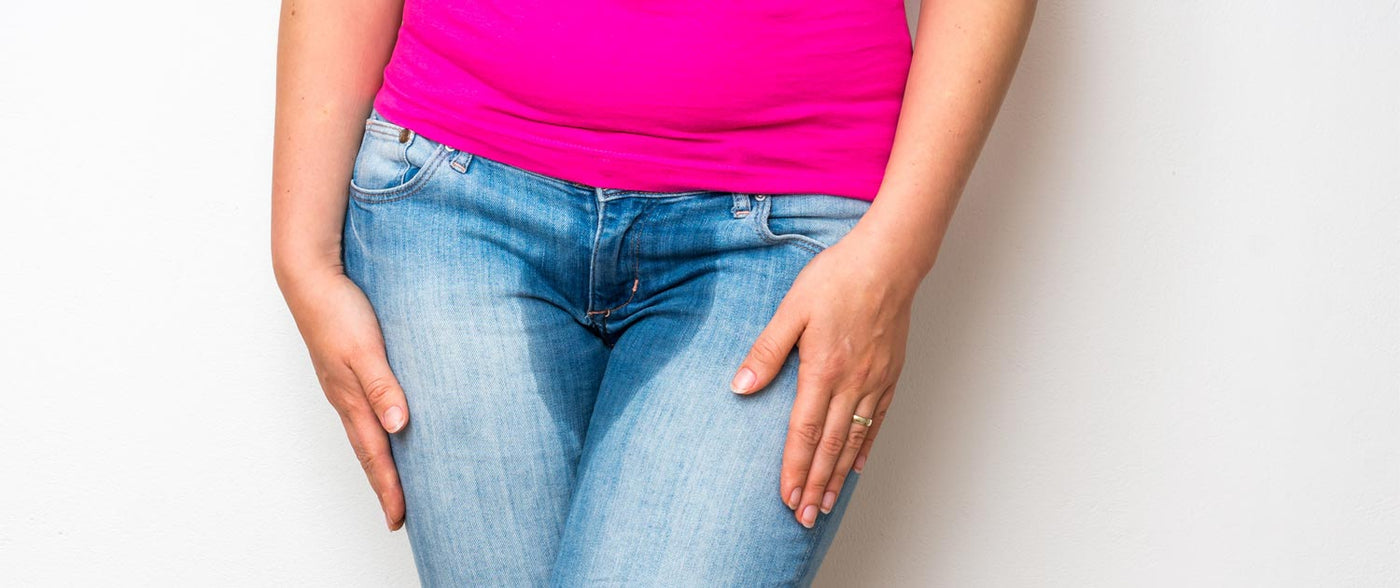Countless people deal with urinary incontinence every day. In fact, it's estimated that up to 25% of all seniors are affected, with women experiencing incontinence about twice as often as men.
Urinary incontinence is the medical term for the involuntary leakage of urine—meaning, losing control over urination.
Beyond the physical discomfort, incontinence can also cause significant social and emotional distress. Many feel embarrassed about their condition and keep it to themselves, which prevents them from seeking medical help or learning about the wide range of effective solutions and treatments available.
Let's make one thing clear right away: there is absolutely no reason to feel ashamed of incontinence. It's an extremely common issue that affects millions, and there are many practical ways to manage it, so it doesn't have to limit your life.
In this Seniorshop article, we're shining a light on involuntary urination—not only to help break the stigma, but also to reassure you that you're far from alone. At the bottom of this page, you'll also find more information about the many effective aids we offer and how they can truly make a difference for you.
How incontinence impacts your well-being
Dealing with a health issue in silence can feel incredibly isolating. For many seniors, incontinence comes with a sense of embarrassment, which can heavily affect social life. Some worry about potential odors or what others might think, so they prefer to avoid social situations. Others might feel nervous about leaving home, since it isn't always easy to find a restroom in time if the urge arises.
When this happens, incontinence moves beyond a physical issue and becomes a greater problem—causing people to isolate themselves out of embarrassment or feeling "different." This is why incontinence is often linked to emotional concerns like depression, anxiety, and loneliness.
Given how widespread incontinence is among older adults, there’s a real need to break the taboo and bring more awareness to this topic, so no one needs to feel ashamed or alone.
A good first step is providing clear, accurate information to dispel myths and misconceptions. So let’s start by taking a closer look at what incontinence is and why it occurs.
Understanding incontinence
As mentioned, urinary incontinence means involuntary urination, and it typically comes in two main types:
- Stress incontinence
- Urge incontinence
Stress incontinence usually happens during physical activity or when you laugh, sneeze, or cough. These activities create increased pressure in your abdominal area, which can trigger leakage. This may be just a few drops, but can also result in a larger amount.
Stress incontinence is fairly common and can affect adults of all ages. It's often a sign of weakened pelvic floor muscles. For men, the most common cause is an enlarged prostate, which can occur, for example, after certain surgeries.
Urge incontinence comes from the word "urge"—referring to a sudden, powerful need to urinate. If you can’t make it to the bathroom in time, leakage can occur.
It’s possible to have one type of incontinence, or even a mix of both. Whatever the case, if you experience symptoms, it’s important to talk to your doctor—there’s a wealth of support and solutions available for prevention, treatment, and daily management.
Common myths about incontinence
Because incontinence is often considered taboo, it tends to attract myths and misconceptions. We've touched on this already, but let’s dispel some of the most common misunderstandings once and for all.
Myth 1: Only older women experience incontinence
This isn’t true—anyone of any age or gender can have involuntary urination. While women are most frequently affected, men can experience it too, especially as they get older.
Your risk increases with age, but surprisingly, as many as 17% of women over 20 have already experienced urinary leakage.
Myth 2: There’s nothing you can do about it
Actually, many forms of help exist! People who don’t seek treatment often miss out on simple, effective options. Pelvic floor exercises and bladder training are popular and highly effective. There are also medical treatments available, and in more severe cases, surgery may be an option. In short, effective help is available both to significantly improve or even completely resolve the issue.
Discover a wide range of incontinence aids at Seniorshop
Aids are designed to improve your quality of life by easing worries and making the everyday simpler. At Seniorshop, we offer a variety of products for those experiencing involuntary urination—helping you live more freely and comfortably.
Here’s a selection of our most popular solutions for incontinence, and how they can help you:
Adult diapers and incontinence pads
Top of the list are incontinence pads and adult diapers. We offer a wide assortment of incontinence pads and adult diapers with different absorbency levels for both men and women. Our range includes options that effectively absorb liquid and prevent odor, with a strong emphasis on discreet and comfortable fit—so they're not visible under clothing. Popular brands like TENA® are available for both men and women.
Incontinence briefs and swimwear
You can choose from a variety of incontinence underwear designed to absorb moisture and reduce odor. We stock boxers for men, briefs for women, and even incontinence swimwear—so you can visit the pool without worry.
Incontinence bed pads and sheet protectors
Our selection also includes a range of incontinence bed pads—both disposable and reusable. These make it easy to protect chairs and mattresses from stains, and our incontinence-friendly bedding is extra soft and comfortable.
Odor removers
If odor is a concern, we offer a great selection of odor removers to help you feel your best. Our odor neutralizers actively eliminate unwanted smells (instead of just masking them), and come as sprays or concentrated solutions you mix with water. They’ll keep your clothes and furniture fresh, no matter what happens.
With the right aids for incontinence, you’re well on your way to enjoying greater comfort and a better quality of life.


